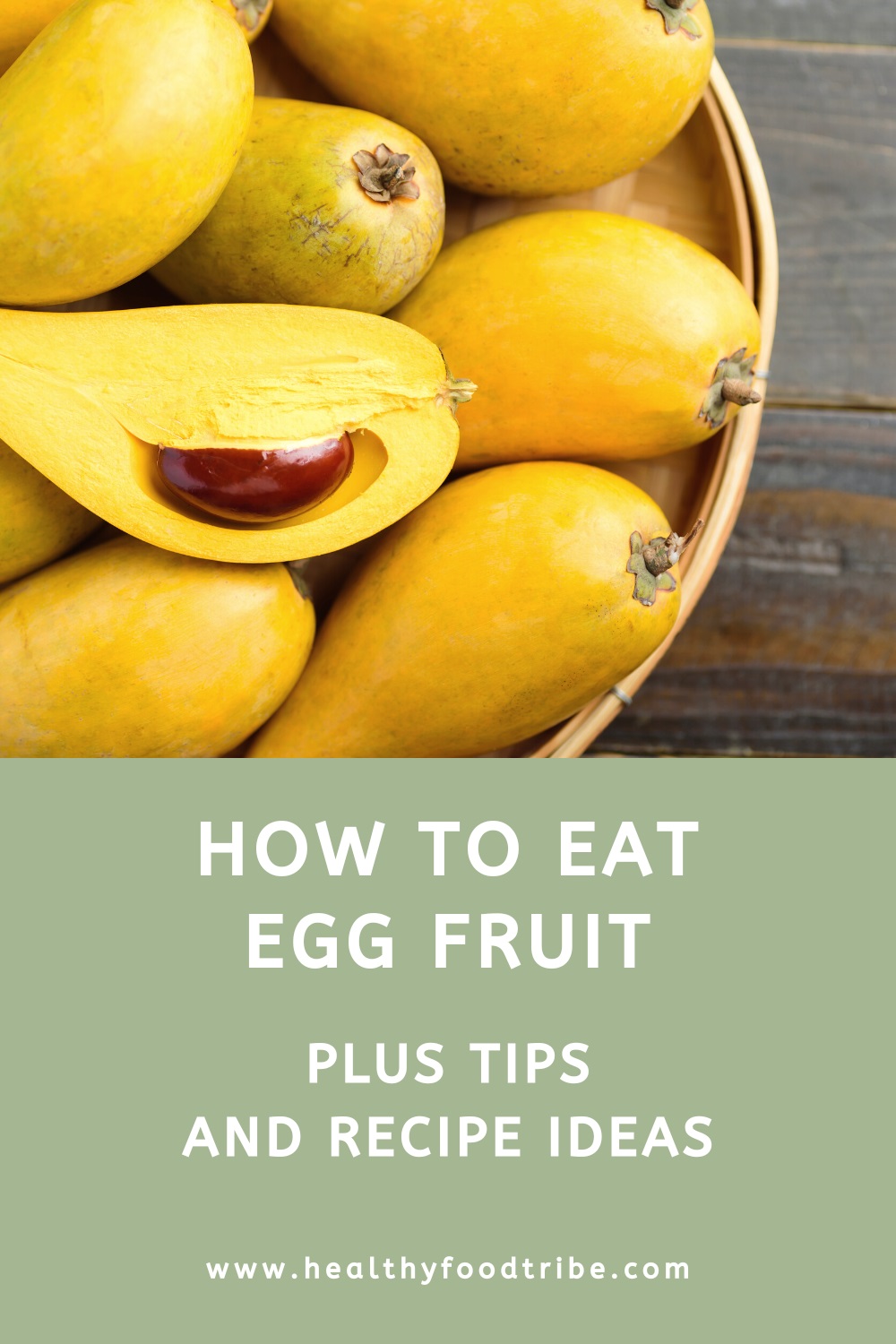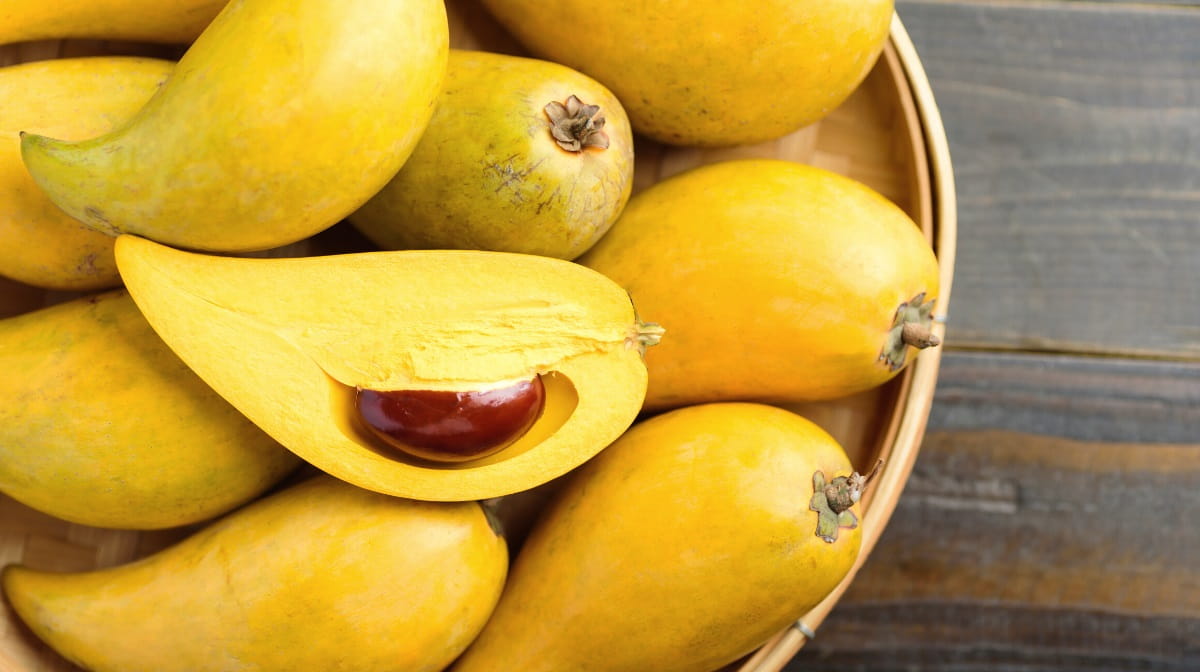Last updated: April 26, 2024
What is egg fruit, and how should we cut and eat it? This guide explains everything you need to know about consuming the unique canistel!
While not much to look at, the unassuming canistel has one of the most unique textures and richest flavors in the fruit world. But, since they are rare outside of the tropics, few people know how to enjoy this bright yellow fruit.
In this article, we’ll take a closer look at this tropical delicacy. I will explain how to eat egg fruit and give you some key pointers for selecting ripe fruit and putting them to use.
What Is Egg Fruit?
Before we talk about eating and preparing egg fruit, let’s first learn a bit more about this unique treat.
Origins
Egg fruit (scientific name Pouteria campechiana), also known as canistel or yellow sapote, is a tropical fruit native to Central America and southern Mexico.
Today, this fruit is grown in tropical and subtropical regions throughout the world. It is very popular in the Philippines, Indonesia, India, and parts of Africa. In the United States, cultivation is limited to Florida, Texas, and Hawaii.
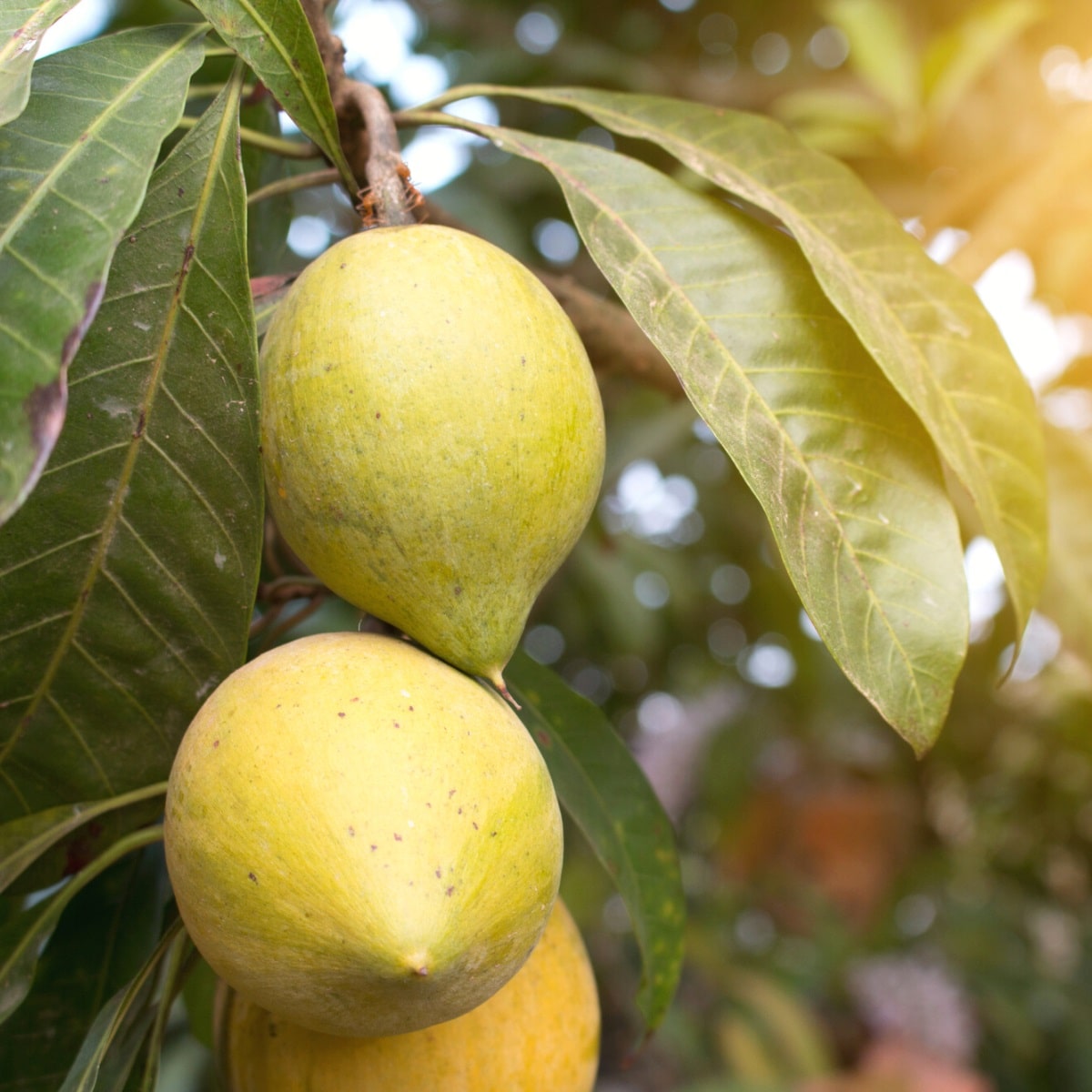
Yellow sapote season is typically between early fall and late winter, though this varies by region. Production peaks in December through January in the Northern Hemisphere.
Appearance
With many popular cultivars, the size and shape of these fruits can vary greatly.
The best-tasting fruits tend to be quite large (about the size of a mango) with glossy skin and an oval shape. Other common varieties include plum-sized, egg-shaped fruits and larger heart-shaped cultivars.
One thing all canistels have in common is bright yellow skin. At peak ripeness, that skin takes on an orange-ish hue that quickly browns as the fruit becomes overripe.
Flesh
The flesh inside egg fruit is very similar in color to the yolk of a hard-boiled, free-range chicken egg. The texture, uniquely, is also very similar to a hard-boiled egg, hence the name.
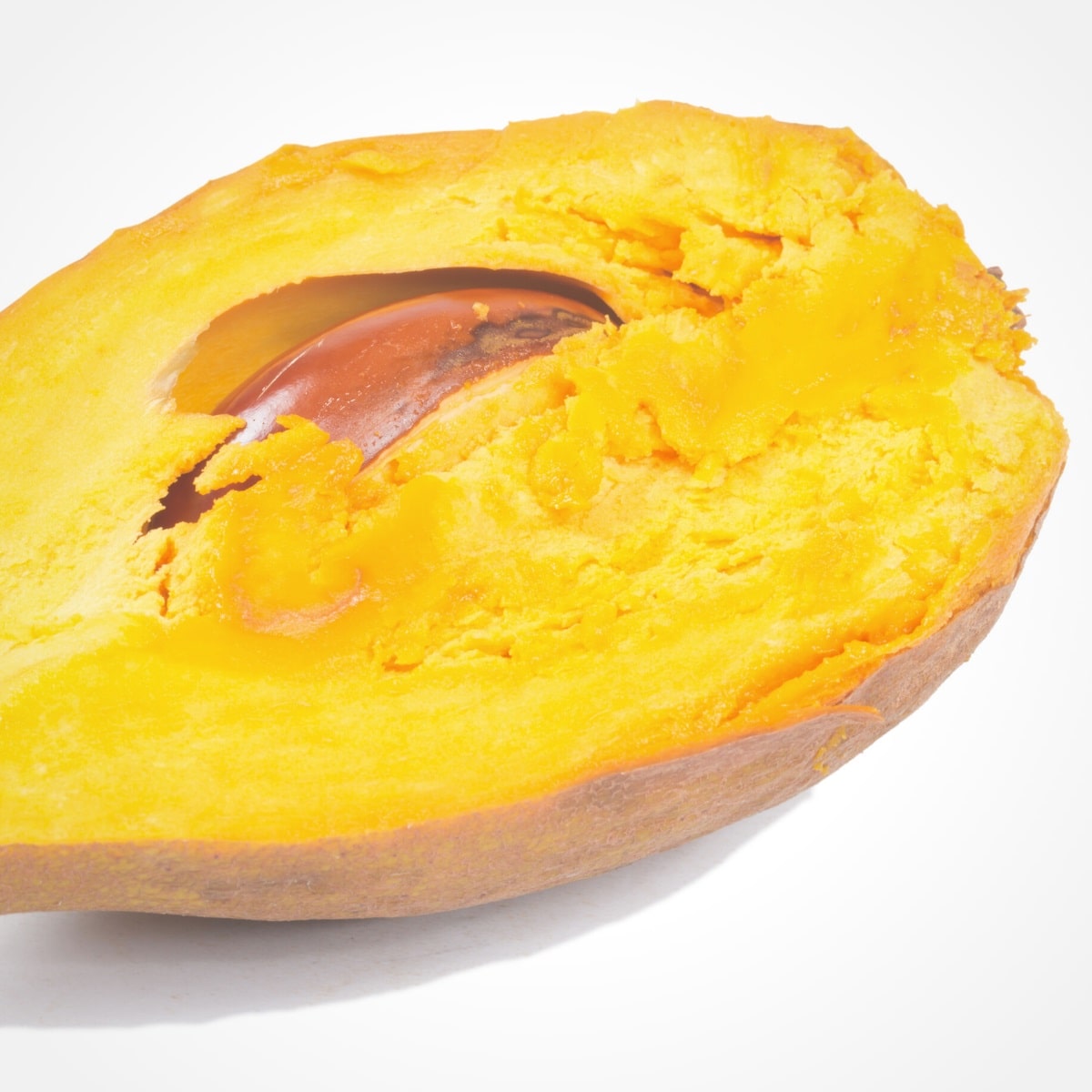
Through most stages of canistel development, the yellow-orange flesh is dry and somewhat crumbly. But at peak ripeness, it takes on a creamy texture very similar to egg custard.
Taste
The flavor of the fruit at this stage has also been compared to egg custard. It’s sweet and rich with notes of sweet potato pie.
In addition to egg-like flesh, you’ll also find large pit-like seeds inside canistel fruits. These seeds vary in number from one to six, depending on the variety. They are hard and inedible, and quite large, considering the size of the fruit.
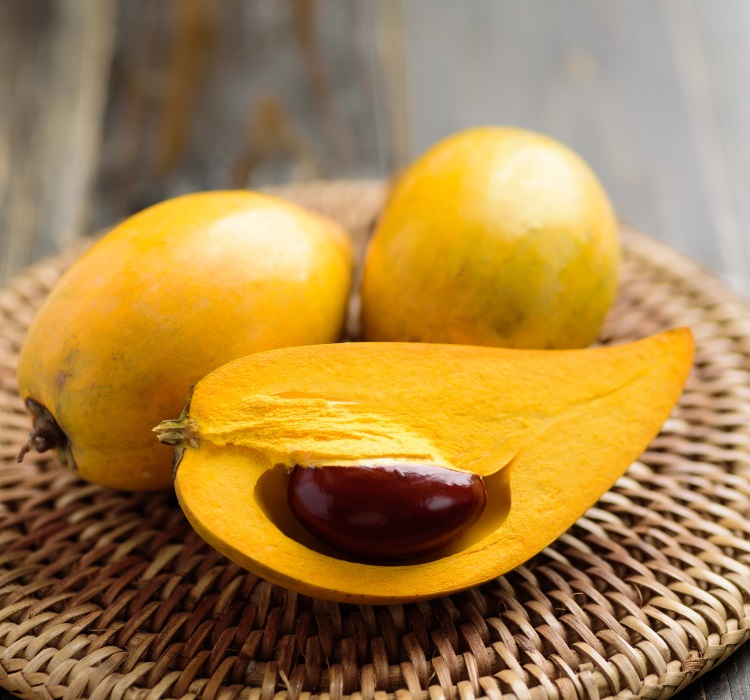
The skin of the canistel, while thin, is also not typically eaten. Only the soft flesh inside is consumed.
Most often, egg fruit is eaten fresh with a spoon as a sweet treat. This fruit can also be used in smoothies, baked goods, and savory dishes, and to make jams, jellies, and marmalades.
Nutrition
Unsurprisingly, all that orange flesh in egg fruits offers a good amount of carbohydrates and protein. It is also particularly high in B vitamins (thiamine and niacin), Vitamin C, calcium, phosphorus, and iron.
For a complete overview of the nutritional profile of egg fruit, visit this article on the Purdue University website.
How to Eat Egg Fruit?
If you’ve managed to track down a ripe egg fruit and are ready to enjoy this unique treat, you’ll first need to know how to cut it.
If you’ve ever cut up an avocado, then you’re ahead of the game. That’s because cutting an egg fruit is very similar to opening up an avocado.
Steps to cut and eat an egg fruit:
- Rinse the egg fruit under running water to remove any dirt or impurities.
- Start by laying the egg fruit down on a cutting board.
- Using a sharp knife, slice the fruit lengthwise from the stem to the bottom. It should cut easily if it’s ripe.
- Twist and pull the two halves apart to expose the flesh and seeds inside.
- Use a spoon to scoop out and discard the seeds.
- With the seeds removed, use a spoon to scoop out the flesh. The texture should be similar to that of a ripe avocado or a hard-boiled egg yolk.
If you plan to eat the fruit fresh, you can now safely put some of that delicious flesh in your mouth to eat.
If you want to use it to make something like jelly or a smoothie, spoon it into a bowl until each half has been hollowed out.
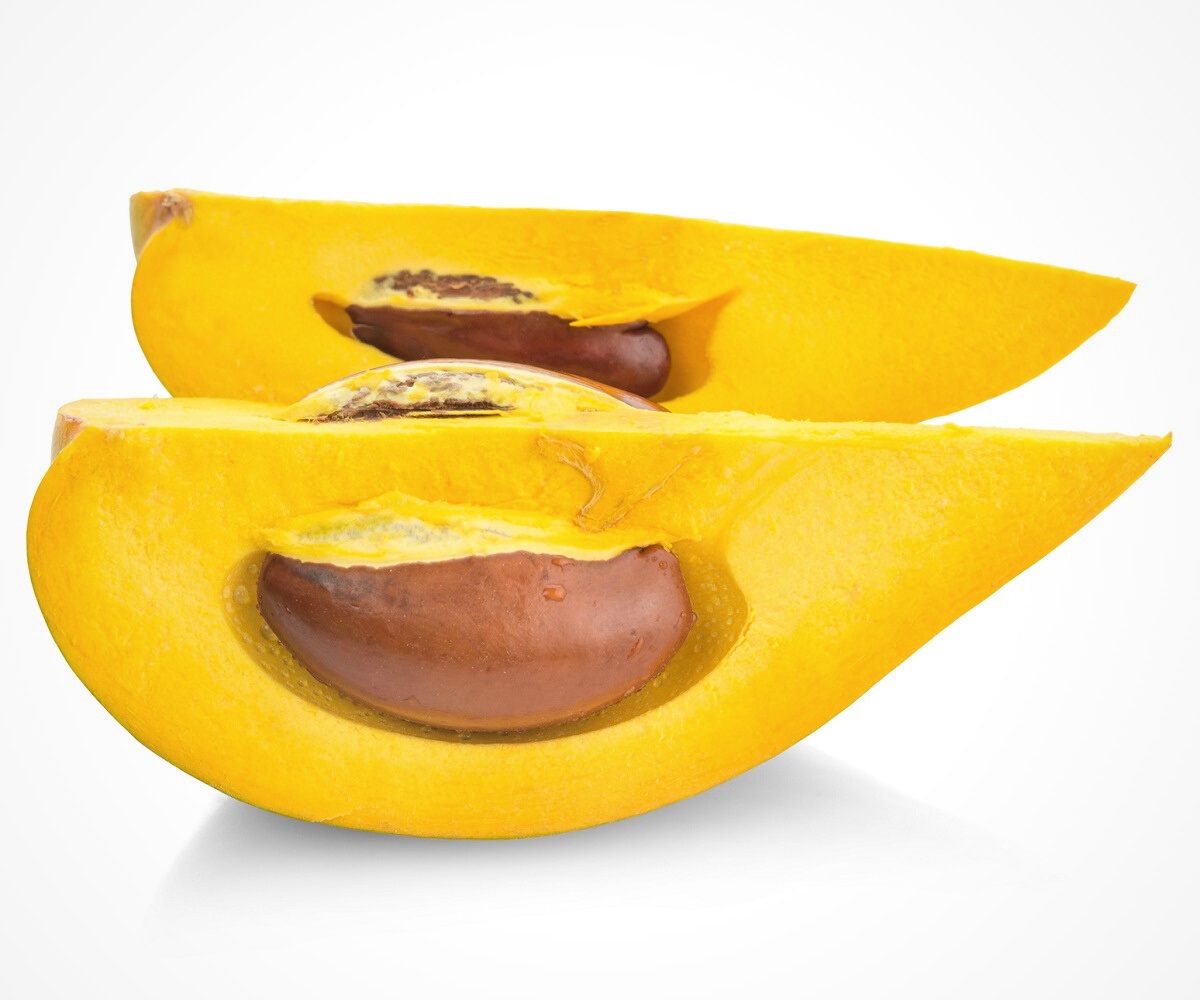
Tips and Recipe Ideas
Now that you know how to access the egg-textured flesh of the canistel, here are a few more tips for selecting and utilizing this fruit.
When is Egg Fruit Ripe
A ripe egg fruit will be bright yellow to yellow-orange. Some brown speckling or brownish tinge is normal, but too much can indicate an overripe fruit.
Pick the fruit up and give it a gentle squeeze. The flesh should give slightly under pressure. A ripe fruit will also feel heavy in your hand. If the flesh is squishy, bruised, or the color overly dull, put it back and find another one.
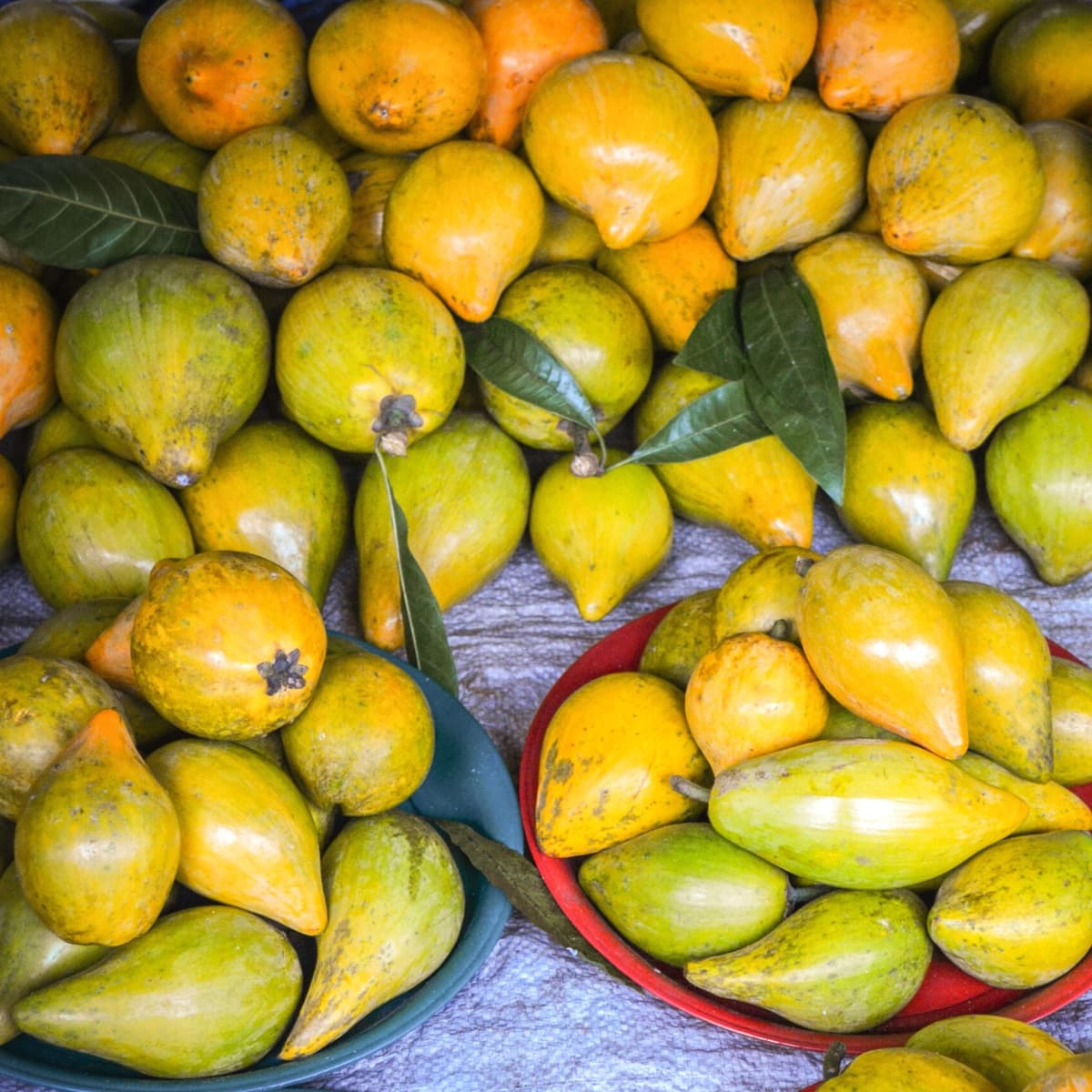
A perfectly ripe canistel will have uniform, bright yellow-orange flesh inside. Most varieties have a creamier texture when ripe, and a dry crumbly texture when cut into too early. Any browning or dull coloration indicates the fruit is under-ripe or overripe.
The rich sweetness of egg fruit is most apparent at peak ripeness. When not quite ripe, the flavor is more subdued, less sweet, and a little astringent.
How to Store Egg Fruit
Egg fruits are notorious for going from under-ripe to overripe very quickly, so you always have to keep a close eye on them when storing them. Place under-ripe fruits on the counter and test them twice daily for signs of ripeness.
They can also be placed in the fridge to delay ripening and buy some extra time. Storing them in the fridge instead of on the counter is a good idea if you live in a warm, humid environment.
If you have an excess of ripe canistel, freezing the flesh is the best option for storage. Scoop the flesh out and pack it into ice cube trays. Freeze the trays for a couple of hours and then place the egg fruit cubes in a ziplock bag or airtight container and place them back in the freezer.
These cubes will stay good for about six months. Frozen canistel flesh is best used for cooking or baking applications or added to smoothies. It tends to lose that creamy texture and isn’t nearly as pleasing to eat raw.
Egg Fruit Uses
Fresh egg fruits have many uses. The flesh can be eaten straight or used as a topping. The crumbly flesh of less ripe fruits makes a good topping for salads and parfaits, while the creamy ripe flesh can be spread over toast or English muffins.
The unique texture of egg fruit also makes an excellent vegan-friendly egg substitute for eggnog. The flesh can also be used to flavor beverages and desserts. In many regions, egg fruit is dried into flour and used to make pancakes and other sweet treats.
Much like sweet potatoes, the earthy richness of canistel also pairs well with savory flavors. The flesh can be mashed and mixed with spices and used as a mushroom cap filling. It can also be used as a thickening agent and flavor enhancer for soups, curries, and sauces.
Because egg fruit retains its texture and flavor during heating, it makes a great option for creating marmalades, jellies, and jams.
